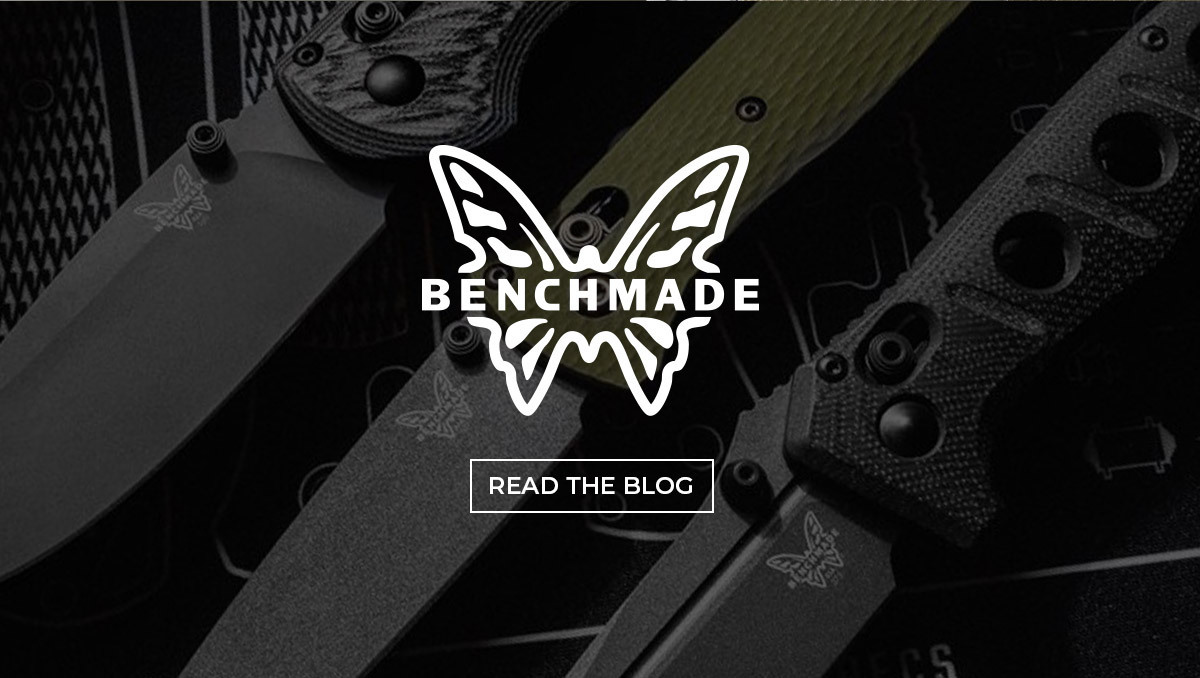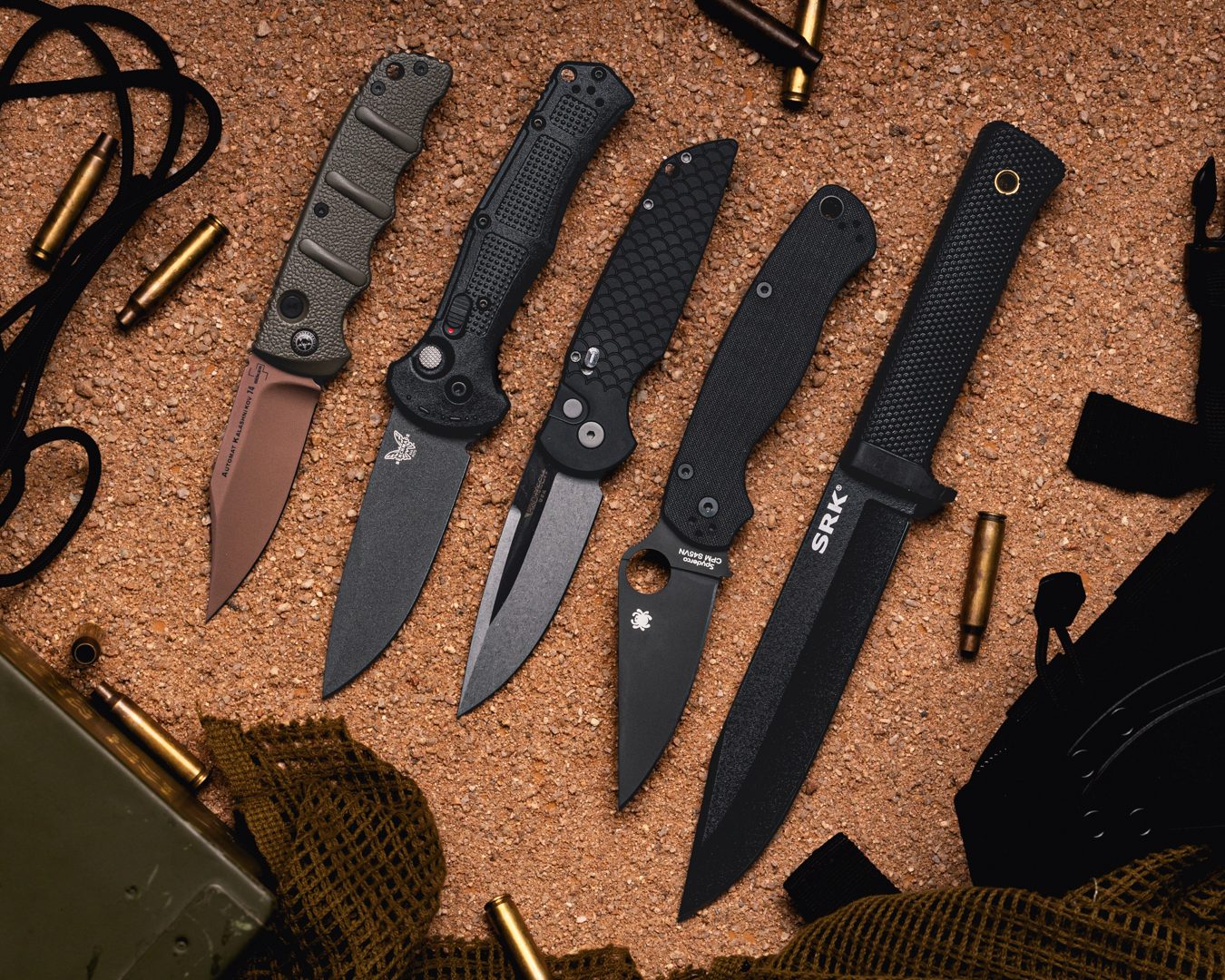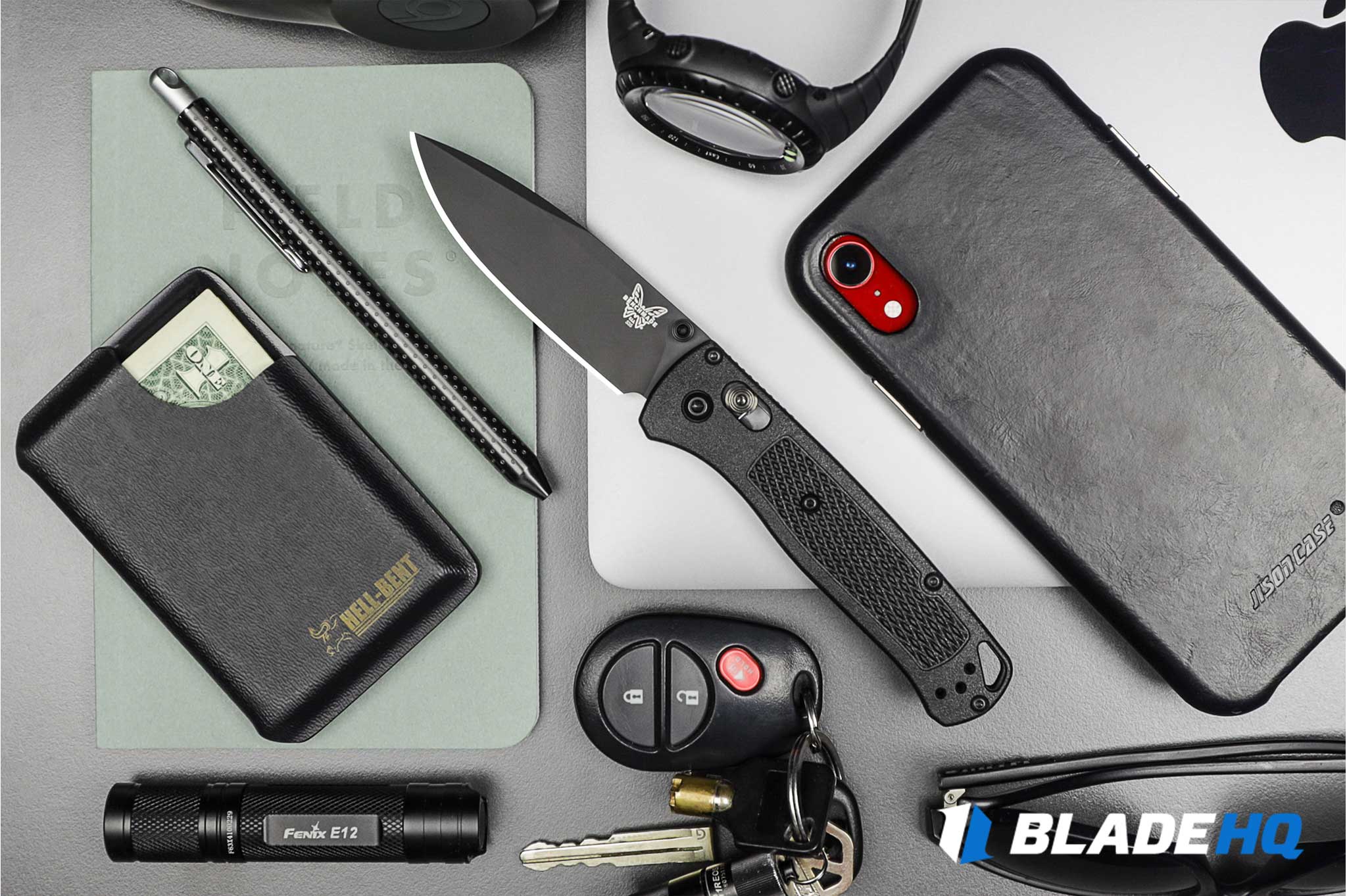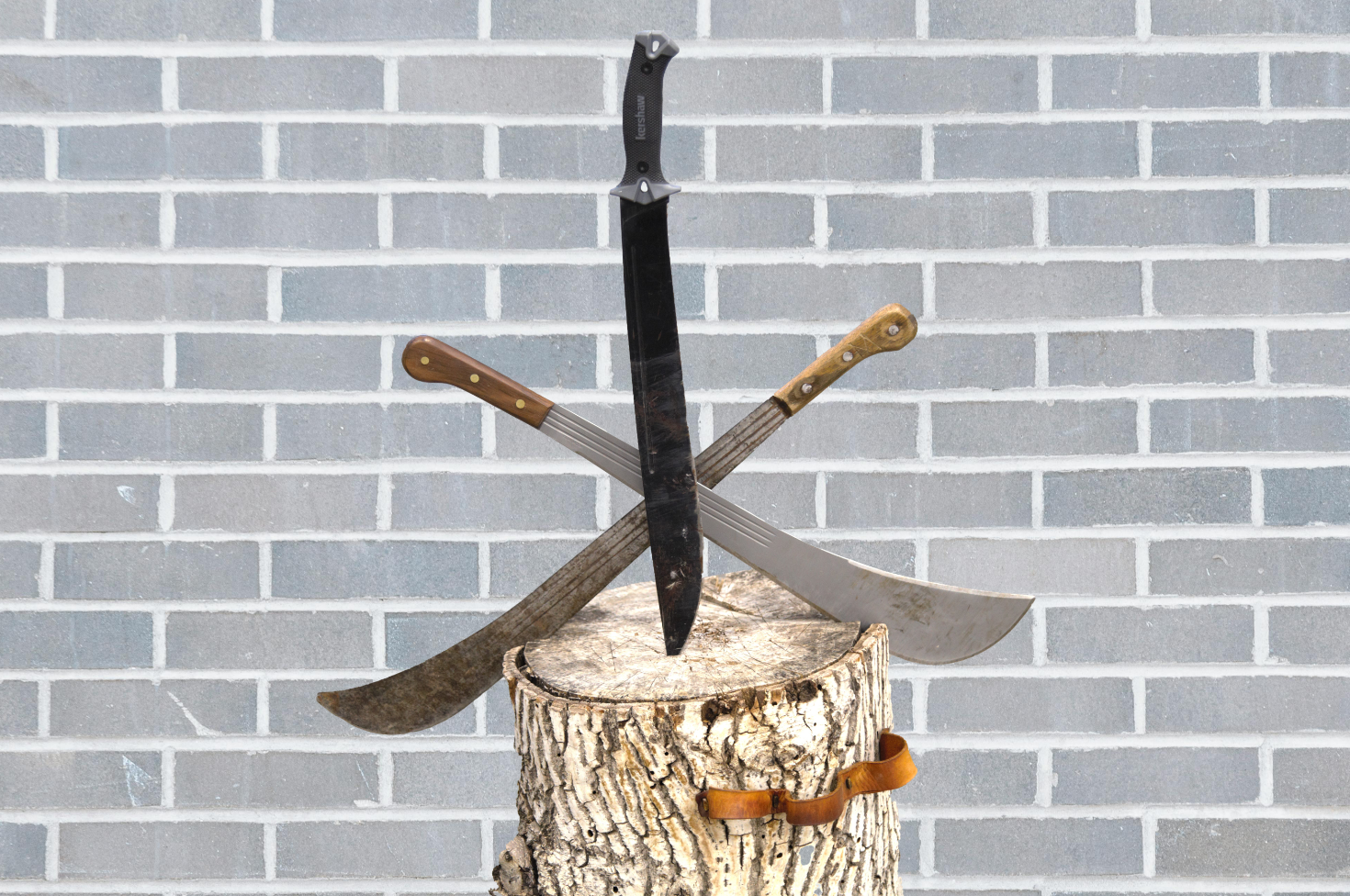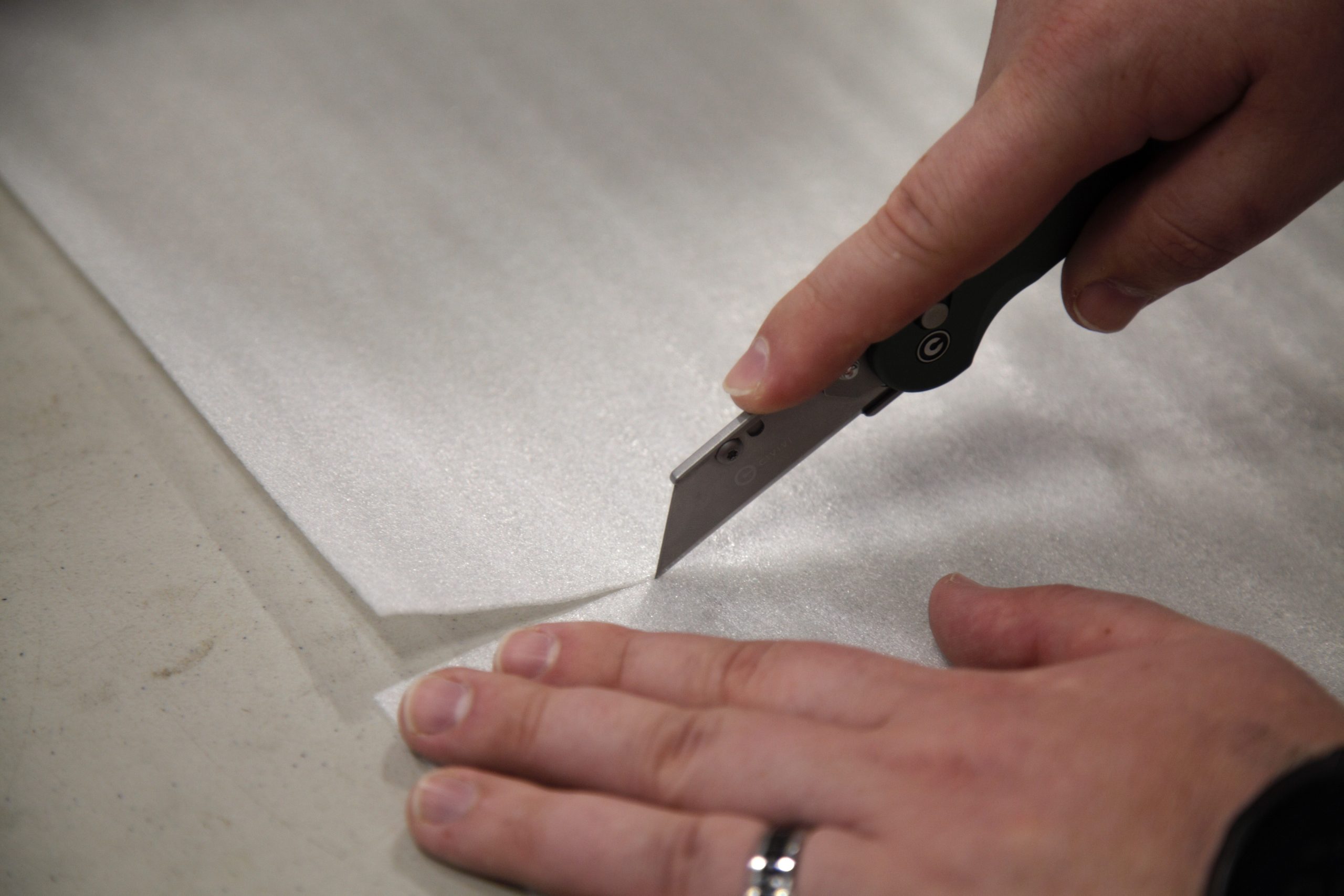Movies, TV shows, video games, and a downright unhealthy amount of Anime have given the humble switchblade a bad reputation. Most people think switchblades are wicked-fast, razor-sharp, purpose-built killing tools. Unfortunately for knife folks, this reputation spread all the way to federal and state legislators, so owning, carrying, and using a switchblade is a legal gray area. Check out our Switchblade Legality Article to learn more. If you apply some switchblade safety tips, however, a switchblade is just as safe as any other knife!
When we say switchblade, we mean a knife that opens automatically or by force of gravity or inertia. If your knife has a button that opens it, or if you swing your hand and the knife’s weight carries it open, it’s a switchblade. That definition is the subject of legal debate and varies from jurisdiction to jurisdiction. Learn more from the American Knife and Tool Institute.
When you check the reputation of the switchblade at the door, you can see that they are no more or less dangerous than any other knife. In both cars and knives, automatics are no more dangerous than manuals, they just require a different set of safety considerations.
General Safety Rules
The first rule of switchblade safety is to remember that a knife is a knife. All the knife safety tips you follow with your folders and fixed blades apply to switchblades all the same. “A sharp knife is a safe knife”, “A falling knife has no handle”, “You should be the only person in your blood circle”, and other knife safety one-liners still apply. With that in mind, there are some special considerations that apply to handling a switchblade.
- Switchblades have fast-moving sharp edges, and often more than one. Always know the path the blade wants to take, and keep anything you don’t want to cut out of the way.
- Switchblades often have springs inside them, and they push on the handle as well as the blade. Be prepared for forces equal and opposite to the movement of the blade.
- Automatic knives are much less politically correct than their manual brethren. As with all knives, analyze the situation you are in before you pull one out.
- Don’t hand a switchblade to someone who is afraid of it, and don’t fear it yourself.
For the purposes of this article, there are three types of switchblade knives: Butterfly knives, Side-Opening Automatics, and Out-The-Front Automatics.
Butterfly Knives
Butterfly knives, or balisongs, are their own beast, and there is an effectively infinite number of ways to “use” one. Check out our in-depth butterfly knife article to learn more! If your butterfly knife is a trainer, it poses about as much danger as a pair of salad tongs. Do with it whatever brings you joy.
But if your knife has a live edge:
- Always know which handle is the “safe handle” and which handle is the “bite handle”.
- The safe handle is on the spine side of the knife. If you’re holding that handle, it’s really hard to cut yourself. The bite handle is on the edge side. If you’re holding it when the knife closes, it will “bite” you!
- When it comes to tricks, learn to walk before you try to run. Work your way from easy tricks to the harder ones.
- Use a latch, a boot, or a sheath when carrying the knife, or it will open in your pocket, potentially cutting your pants, leg, or hand.
- Make sure you are far away from other people when practicing; your knife can easily become a projectile.
- Remember that to learn anything, you have to make mistakes, and getting cut is part of the balisong journey
Side-Opening Automatics
Side-opening automatics (like the Pro-Tech SBR) are much like the folding knives you’re familiar with, they just open themselves when you disengage the locking mechanism. Before you open one, make sure you are firmly holding your knife without any part of your hand in front of the blade. Once you push the button, don’t loosen or adjust your grip until the knife is fully open and the locking mechanism has engaged.
When closing a side-opening auto, disengage its lock, and push on the blade’s spine. The blade is spring-loaded, so don’t let go while you move your hand out of the way of the blade. Carefully close the blade until the lock reengages. If your switchblade has a safety (usually a small slider near the button), engage it. After that, your knife is pocket-ready and you can be on your way!
Additional safety considerations:
- Disassembling a side-opening automatic has its own set of challenges. Unless you are confident in your ability to get it back together, contact your knife’s manufacturer if your knife needs maintenance.
- The coil springs found in many side-opening autos can wear out over time. If your auto is several years old, it might open slower than you’re used to, and in extreme cases, not open all the way.
- Do not attempt to close a side-opening auto one-handed.
Out-The-Front Knives
Out-The-Front knives, or OTFs, come in two flavors: Single-action (like the Smith and Wesson M&P OTF), and double-action (like the Microtech Ultratech).
On a single-action OTF, a spring pushes the blade out, but you must manually recharge the spring to get it back in. To open one, make sure nothing is in front of the blade, and push the button. It will snap out with some authority, so make sure you have a secure grip. To close it, disengage the lock and draw the recharge handle all the way back. You’ll hear and feel the locking mechanism click into place when the knife is closed all the way.
A double-action OTF is even easier; to open, make sure there is nothing in front of the knife and slide the lever forward. The knife will snap out fast, so hold on. To close, just do the same thing in reverse. Sometimes double-action knives come off track. If this happens to you, don’t worry. Nothing is broken. Just pinch the flat surfaces of the blade and pull all the way out, and it will get the blade back on track and you back in business!
Take note that single-action OTFs cannot come off track, and no matter what happens, the blade will have the full force of the spring behind it. Be extra careful with these, what would be a simple cut from another knife can be a serious injury with a single-action OTF.
Additional Safety Considerations:
- OTFs can have double-edged blades. If yours does, mind that you cannot rest your thumb on the spine of your knife.
- Your OTF’s favorite food is pocket lint. Use an air compressor or spray gun oil to clean it out.
- Don’t attempt to disassemble an OTF unless you know exactly what you’re doing. You will probably void your warranty in doing so.
- OTFs are not as tolerant of hard use as other knives. Mind that you have a complicated mechanism, and debris, trauma, and neglect can prevent the knife from opening and closing properly.
Conclusion:
Switchblades don’t deserve their bad reputation. They certainly are different from other knives, but they are no more dangerous. A bit of practice and know-how can make a switchblade a valuable tool in your collection, and if you treat it with respect, it will treat you with respect.
